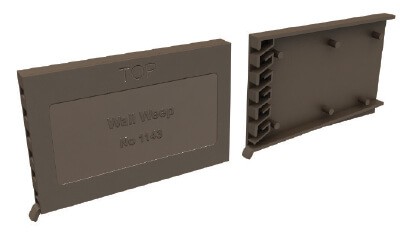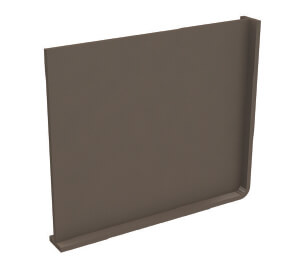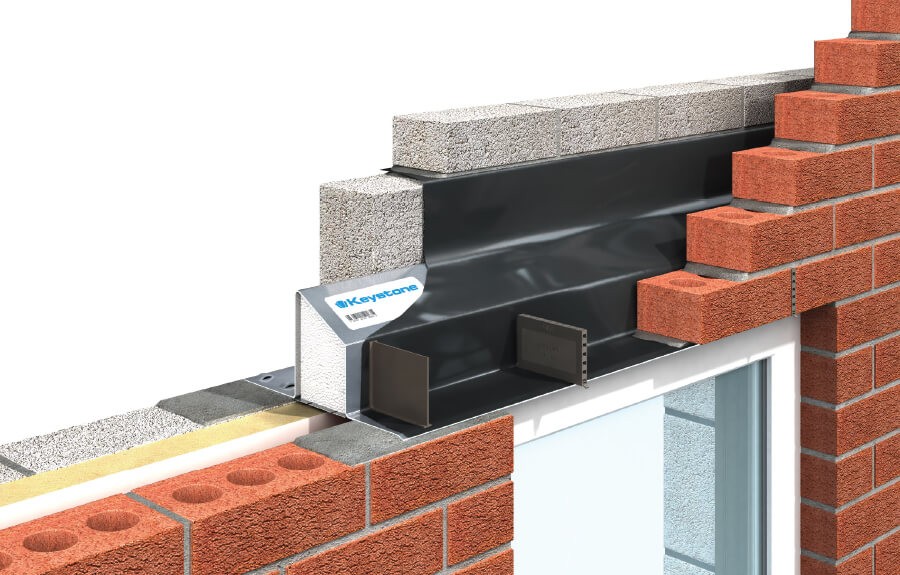Weep Vents
Weep Vents create weep holes which are required over lintels to discharge collected water that may form at the window/door head. Each vent sits in the masonry perp end.
Keystone Weep Vents are positioned within the perp joints between masonry.
Their function is two-fold:
- They act as a weep to discharge water from DPCs, cavity trays and lintels.
- They also act as ventilators to encourage the cavity to breathe.
- Keystone Weep Vents also satisfy UK NHBC and Building Regulation requirements.
Sizes
49mm x 87mm x 9mm.
Free airflow approximately 300mm per unit

Stop Ends
A Stop End is required at each end of a lintel to prevent moisture cascading over the ends into the cavity and onto the inside wall.
The use of Stop Ends quickly and economically introduce a lintel feature which removes the dangers that could occur with volumes of water being directed into the cavity.
Stop End Solution
Keystone Stop Ends are available in two standard sizes. Stop Ends can be incorporated into the moulded base of the lintel by a butyl anchoring strip enabling the Stop End to be secured towards the end of the lintels in the most appropriate position to suit the masonry perp joint.
When fitted discharge from lintels is directed through brickwork weeps.
Why Stop Ends are used?
The Building Research Establishment defect action sheet (DAS98) states
“If Stop Ends are not used on cavity trays or lintels acting as cavity trays, rain water discharge particularly in cavity filled walls, may wet the inner leaf, producing dampness of
internal walls.”


